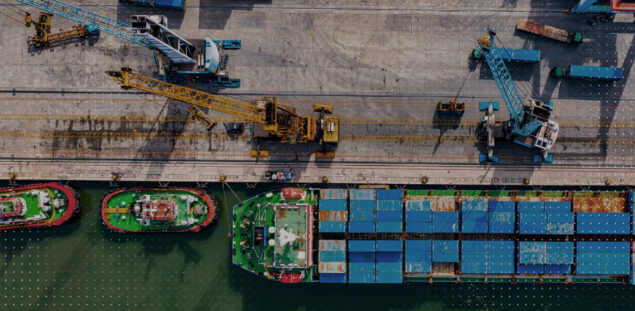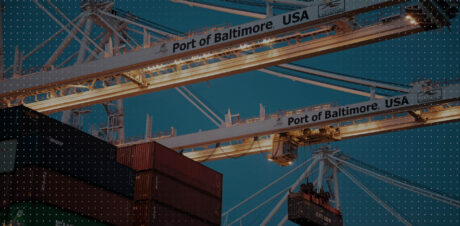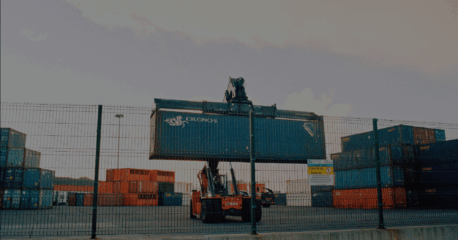At Sayari, we are constantly communicating with government teams across various departments, including at the Treasury, Commerce, and Defense to name a few. In these conversations, we’ve noticed several common themes and challenges that come up time and time again. This blog post is part of a series where we will answer the burning questions we hear most from government analysts and leaders.
President Trump’s “America First Trade Policy” has resulted in unprecedented change within the import control community. The need to enforce rapidly changing tariffs and increase scrutiny due to the suspension of the de minimis exemption join existing enforcement efforts, such as the Uyghur Forced Labor Prevention Act (UFLPA), to create a large increase in screening activity.
Incoming shipments, collections, and audits are increasing. Import volume rose 10 percent year-over-year in the first four months of 2025. As of June 30, 2025, U.S. Customs and Border Protection (CBP) has collected more than $166 billion in total duty, taxes, and fees, compared with approximately $88 billion in FY2024 and $92 billion in FY2023. And the number of audits completed in FY2025 is trending to surpass the audit number for FY2024. Government professionals are grappling with the question: How can we efficiently screen millions of import shipments for risk?
This blog post discusses the challenges faced by investigators in the fight against illicit import activity and provides details on how technology can help these professionals respond efficiently to an increasing workload.
>> See how compliance teams are responding to the latest tariff updates and enforcement trends <<
Identifying Risk in a Sea of Shipments
The Trump administration’s trade policy requires a more aggressive focus on screening imports. This is no small task: the large volume of shipments requiring screening, a complex regulatory environment, and increasingly sophisticated evasion tactics challenge investigators to keep pace.
New high-risk sectors identified for increased enforcement scrutiny under the UFLPA add to the screening workload required to enforce new tariffs and counter the import of prohibited and restricted goods such as counterfeits, narcotics, and pharmaceuticals. In addition, the U.S.-Mexico-Canada Agreement (USMCA), the Central America-Dominican Republic Free Trade Agreement (CAFTA-DR), and the Enforce and Protect Act (EAPA), intended to enforce antidumping and countervailing duty orders, are just a few examples of a large and complex regulatory environment that investigators must efficiently navigate.
>> Get techniques for identifying forced labor in supply chains <<
While CBP is the primary enforcer at ports of entry, other government agencies are seeing increased workload due to heightened tariff enforcement. In August 2025, the Department of Justice and the Department of Homeland Security launched the Trade Fraud Task Force to pursue enforcement actions against parties seeking to evade tariffs and smugglers importing prohibited goods. The Department of Justice has also identified trade and customs fraud as a “high-impact” enforcement area and expanded its Corporate Whistleblower Awards Pilot Program to include trade, tariff, and customs fraud.
Meanwhile, evasion tactics are becoming more sophisticated. Organizations are using tariff engineering to deceptively redesign products, creating complex shell entities to obscure supply chains and hide a product’s true origin, and performing alterations which may or may not constitute a substantial transformation in an effort to reclassify goods under a more favorable country of origin.
To combat these evasion tactics and enforce growing regulations, government agencies must look to technology, including AI, to meet an increasing workload and efficiently screen imports without slowing down trade.
>> Discover tools and processes to manage rapid change in import compliance <<
Sayari: The Solution for Trade Enforcement
Government regulators are using Sayari’s platform to support increased enforcement requirements and efficiently screen imports. Using Sayari, investigators have access to 8.75B records, including 1.66B shipment records, to identify patterns, anomalies, and hidden connections that may signal fraudulent activity. Once identified, investigators can leverage Sayari’s full visibility into the context and provenance of data to document their enforcement cases.
Here is how Sayari directly addresses the core challenges involved in screening millions of import shipments:
- For UFLPA Enforcement: Sayari flags 80+ forced labor risk factor types, including entities located in Xinjiang, entities owned or controlled by Xinjiang-based companies, entities importing from Xinjiang, and those linked to prison labor systems. Sayari helps investigators uncover hidden, non-obvious risks — such as complex ownership structures, shell companies, and activities of subtier suppliers — through access to corporate and trade data to cost-effectively and efficiently uncover forced labor risk.
- For Preventing Tariff Evasion: Sayari’s global dataset enables investigators to unpack tariff evasion schemes and identify potential transshipment based on entity attributes (e.g., shared addresses) and trade behaviors (e.g., products shipped, trade partners). Using Sayari’s vast dataset, investigators can efficiently map the relationships between companies, addresses, and individuals to uncover coordinated evasion schemes.
- For Efficient Import Screening: Sayari empowers investigators to quickly batch-screen thousands of entities for regulatory risk. Shipments identified as high-risk can be designated for physical cargo exam, allowing for efficient use of limited resources.
Government investigators within CBP have long trusted Sayari for support in screening and identifying illicit shipments. To learn how your team can efficiently screen imports in a rapidly evolving regulatory environment, request a personalized demo.



